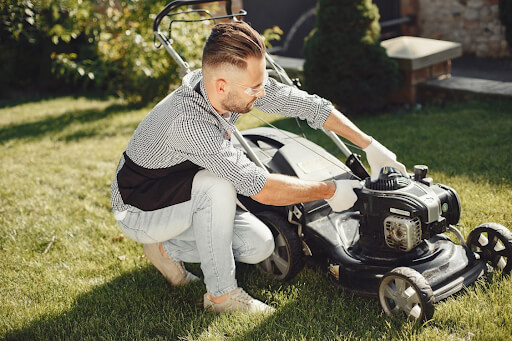For any homeowner with a piece of this quintessential outdoor equipment, a lawn mower is indispensable to keep your yard at its best. However, like any machinery, lawnmowers are not without problems that can take away the relaxation often associated with outdoor activity and replace it with frustration.
From refusing to start making unusual noises to not cutting grass efficiently, knowing how to troubleshoot some of the common parts issues in lawnmowers will be able to save you from wasting valuable time and money, not to mention headaches. In this friendly guide, we will walk through problems you might encounter in the familiar parts and give you the know-how to diagnose and often resolve these issues yourself.
Introduction to Lawn Mower Troubleshooting
Before diving into the nuts and bolts of troubleshooting, let’s examine why this is an integral skill for lawn mower owners. According to a report by the Outdoor Power Equipment Institute, outdoor power equipment and lawn care has become one of many Americans’ regular activities; a large portion indeed own lawnmowers. Many owners may want to consider maintenance, troubleshooting, and regular lawn care activities to avoid unexpected problems and repair costs.
Why DIY Troubleshooting Makes Sense
Troubleshooting can be satisfying on a DIY basis. It will not only help one understand how a lawn mower works, but it often leads to quicker fixes and reduced downtime, especially when you have the right lawn mower parts on hand. More importantly, it can be cheaper than professional repairs of minor problems. Plus, the satisfaction comes with solving issues with your own two hands.
Recognising Common Lawn Mower Issues
Several symptoms can indicate an issue with your lawn mower, ranging from starting troubles to uneven cuts. Let’s break down these symptoms by the lawn mower parts most likely causing them.
Starting Issues
The Engine Won’t Crank:
This is often due to a faulty spark plug, dead battery (in electric models), or old fuel (in gas models). Check the spark plug for corrosion and replace it if necessary. Recharge or replace the battery and ensure you’re using fresh fuel.
The Engine Dies After Starting:
A clogged carburettor, dirty air filter, or blocked fuel line are likely culprits. Each of these components can be cleaned or replaced relatively easily.
Cutting Issues
Uneven Cutting:
This might be due to dull or unbalanced blades, an uneven deck, or incorrect wheel height settings. Sharpen or replace the blades and adjust the deck or wheels as needed.
The Mower Doesn’t Cut:
A slipped or broken belt, in addition to the previously mentioned blade issues, could cause this. Inspecting and replacing the belt is straightforward once you access the mower’s underside.
Physical and Noise Issues
Excessive Vibration:
Loose or damaged blades and unbalanced wheels can lead to excessive vibration. Secure all parts and replace any that are damaged.
Unusual Noises:
Worn bearings, loose hardware, or debris in the cutting deck could be the source. Regular maintenance and cleaning can mitigate most of these issues.
Maintenance Tips for Preventing Issues
While troubleshooting can resolve many issues, regular maintenance is your first defence against common lawn mower problems. Here are some tips to help keep your mower running smoothly.
Routine Cleaning
After each use, clean the deck and blades to prevent buildup and corrosion. This also allows you to inspect these parts for damage.
Regular Blade Maintenance
If you notice any dulling, sharpen your blades at least once a season or more. Balanced, sharp blades ensure an even cut and reduce stress on the engine.
Engine Care
To prevent issues with gas models, change the oil, check spark plugs, and ensure proper fuel storage. Battery care is key for electric models. Regularly check the charge and replace batteries that no longer hold a full charge.
Seasonal Adjustments
Adjust your mowing height according to the season. Higher heights are used in the summer to prevent burning, and lower heights are used in cooler months for a closer cut.
When to Call in the Professionals
While DIY troubleshooting works for most issues, there comes a time when professional help should be at your doorstep. If the steps mentioned above do not work, or if the problem lies within the engine’s internal parts or an electric model’s electrical system, it’s genuinely time to seek professional repair services. Furthermore, periodic professional maintenance can supplement your DIY care to ensure your mower performs optimally throughout its lifetime.
Conclusion
Troubleshooting your lawn mower doesn’t need to be a scary process. By understanding some common problems with lawn mower parts and their fixes, you can keep your lawn looking great at all times. In short, regular maintenance can provide an ounce of prevention, but knowledge of some little things will also save you time and frustration.
Accomplishing DIY troubleshooting and maintenance saves you time and money while enriching your lawn care experience. It provides a deeper connection with your outdoor space and satisfies you, knowing that it is beautiful because you took care of it yourself.


